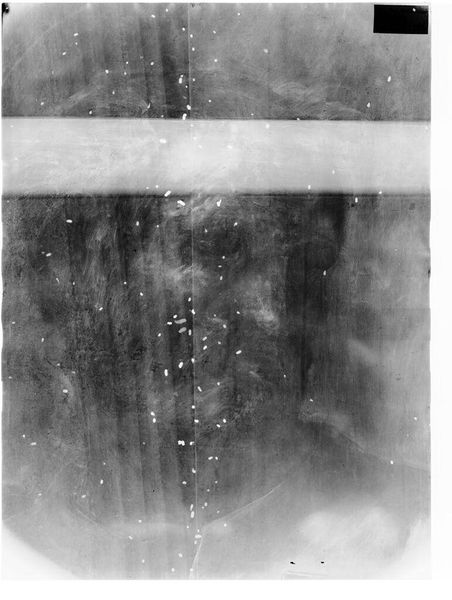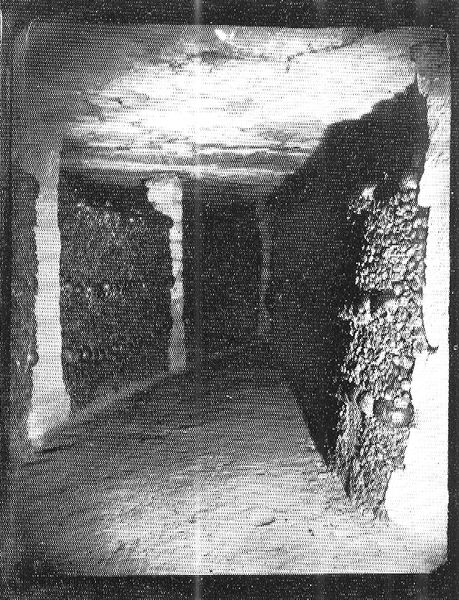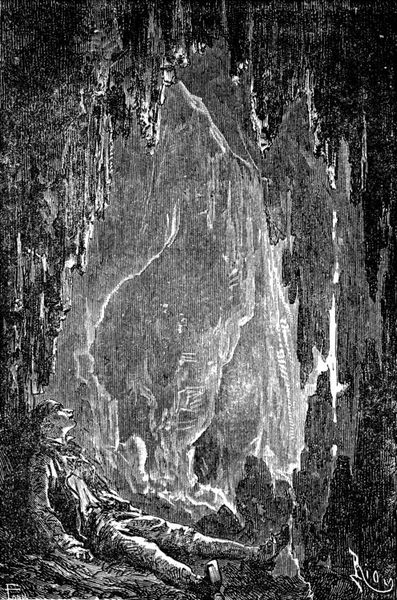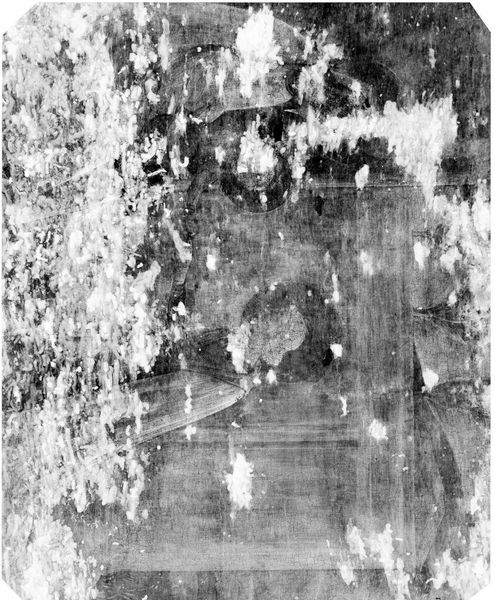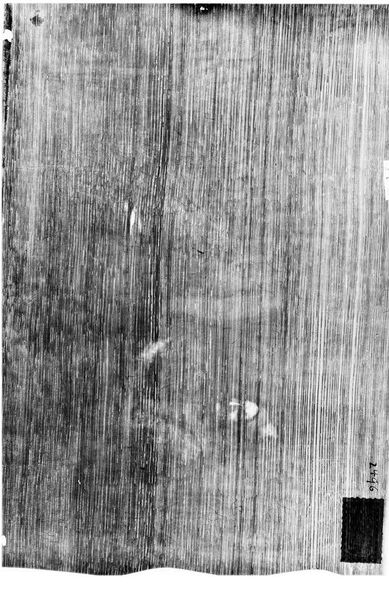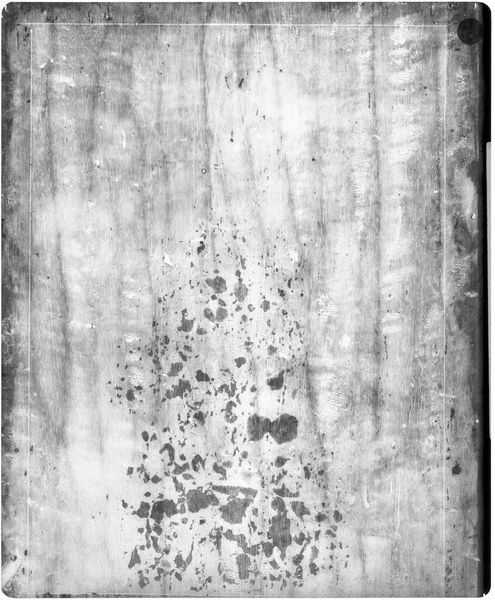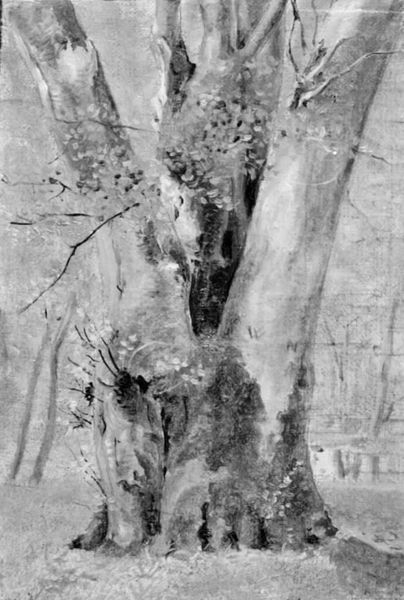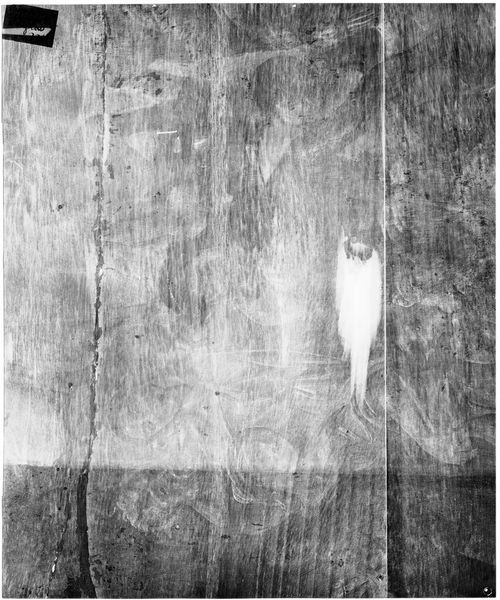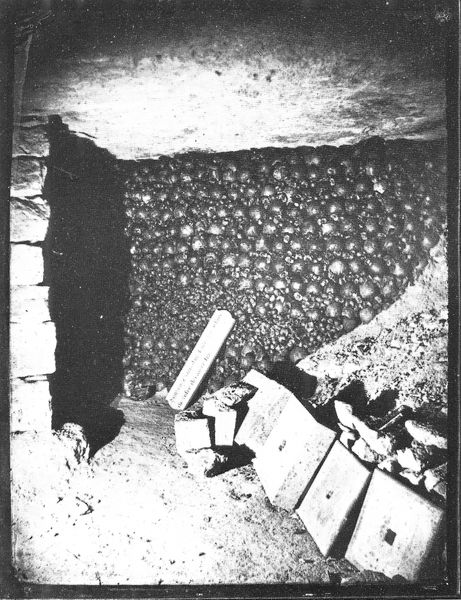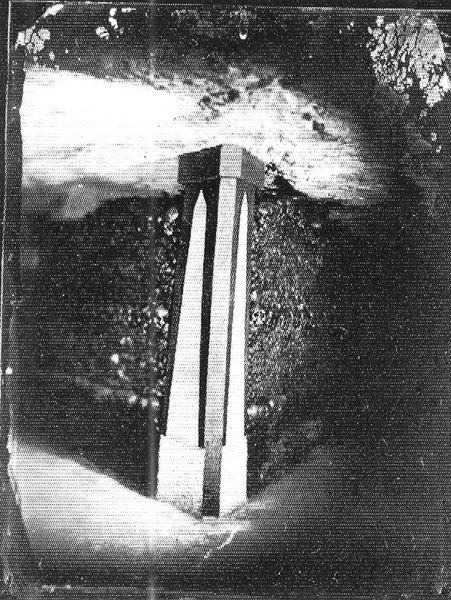
drawing, photography, ink
#
drawing
#
photography
#
ink
#
black and white
#
monochrome photography
#
water
#
line
#
monochrome
Copyright: Public domain
Editor: This is "Musstad" by Theodor Kittelsen, made around 1900. It appears to be a drawing, maybe ink on paper. It's very stark, a black and white interior space. I’m immediately struck by the contrast between the rigid structure and the scattered, almost chaotic, shapes on the floor. What do you see in this piece? Curator: I see a powerful commentary on the Norwegian peasant experience. Kittelsen, deeply invested in Norwegian folklore and national identity, often used stark imagery to depict the harsh realities of rural life. Look at the cabin's construction—it’s rough-hewn, highlighting the labor and material conditions of the time. The scattering of forms—perhaps rodent droppings, seeds or leaves?—becomes a signifier for nature reclaiming human spaces. Editor: So, you see that scattering as almost an encroachment of nature onto the human space? Curator: Precisely. This brings in issues of land ownership, human relationships to nature, and power. What does it mean that something perceived as ‘unclean’ occupies the space that’s meant for human habitation? This invites discussion about the narratives of marginalization, and the voices often unheard in constructions of national identity. How might those occupying the 'musstad' experience themes of social injustice and exclusion? Editor: I never thought of it like that. I was just focusing on how spooky it felt. Curator: Spookiness, in that sense, serves to underline the real-life horrors of poverty, labor, and being othered in society. We must see through the immediate aesthetic experience to its potential political underpinnings, its contribution to larger debates on social justice. So, does looking through this socio-historical lens impact your experience? Editor: Definitely! It adds a whole new layer to my understanding of Kittelsen and his work. I can now see beyond just the scary imagery to the social statement embedded in it. Curator: Exactly, by engaging intersectional narratives, we unearth the rich dialogue between art history and contemporary issues.
Comments
No comments
Be the first to comment and join the conversation on the ultimate creative platform.

